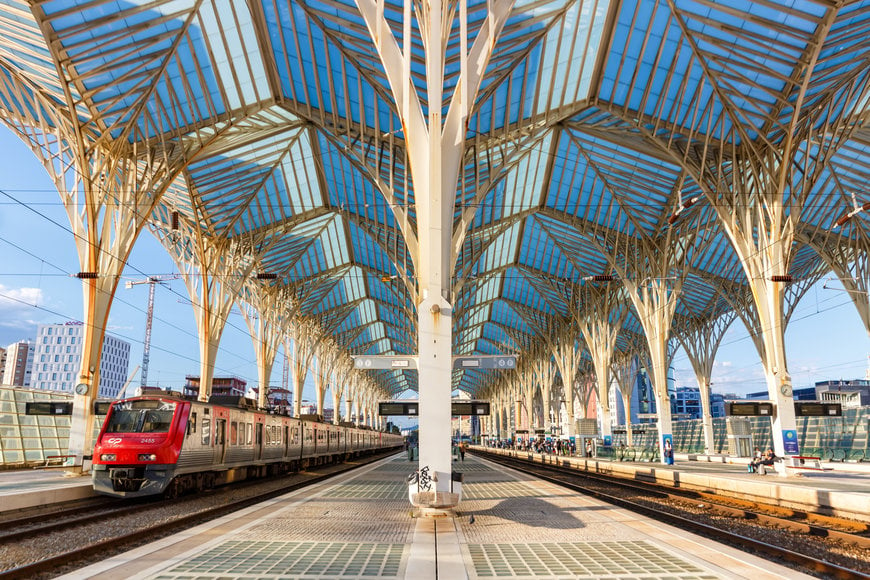railway-international.com
10
'22
Written on Modified on
Trains in Portugal will now save power using Norwegian technology
Several countries have adopted Norwegian technology that provides great savings for the climate and society. If all of Europe followed suit, we could collectively save power corresponding to the consumption of 35 million households.

Transport accounts for a third of climate emissions in Norway. Of this, the share of the railway is only 0.3 per cent. This means that trains consume the least energy per passenger of all modes of transport. Nevertheless, Bane NOR is still working to make the railway even more climate-friendly and sustainable.
One important contribution is Erex, a power-saving system that can cut up to 30 per cent of the power consumption on trains.
“Thanks to this system, trains now consume only 75 per cent of the energy they previously used. This leads to lower energy bills for train operators and saves the environment from unnecessary power consumption. A real win-win situation,” according to Dyre Martin Gulbrandsen, Head of Energy Trading at Bane NOR.
Joint effort to save energy
The system is developed and operated in Oslo by Bane NOR, which also takes a lead when it comes to showing the path to our European neighbours.
“We consider collaboration and the sharing of knowledge to be crucial and we are happy to share the technology with any country wishing to partner with us. We have therefore focused on a major joint effort in which we learn from one another and share costs. We are excited that Portugal will now be joining the effort,” Gulbrandsen explains.
A total of nine countries have become members and use the technology: Belgium, Denmark, Finland, Luxembourg, the Netherlands, Spain, Switzerland, Sweden and Norway. Portugal will now become a test partner, taking the first step towards full partnership. During the test phase, Portugal will learn the system and gain experience from the other members.
“When we were looking for a data collecting system that fulfils the latest EU requirements, a standardised data exchange and settlement solution, we found Eress solutions. We are very satisfied that we are starting testing Erex system!”, says Marco dos Santos from Infrastruturas de Portugal.
Economical train operations
The climate benefits are achieved by measuring and monitoring the energy consumption on the trains. Thanks to the data supplied by Erex, train operators can analyse where and when they generate and consume the most power and how train drivers should control the trains to minimise consumption.
“Modern trains work in the same way as an electric car. The train generates power when braking and consumes more power when it needs energy to accelerate,” explains Gulbrandsen.
Technology creates a more sustainable railway
Energy savings are achieved both during braking and by train drivers adapting their driving style to consume less power.
“We find that certain train drivers make consumption savings of up to 30 per cent. This energy is fed back to the electricity grid via the catenary line and can be sold on to other trains or consumers like you and me. In the past, much of this energy was lost because of heating and braking,” Gulbrandsen explains.
He believes that sustainable initiatives are important for continuously furthering the environmental advantages of the railway.
“This is crucial for the climate and for the railway becoming even more competitive,” says Dyre Martin Gulbrandsen.
FACTS - This is Erex:
• An IT system that uses advanced energy-metering systems on trains.
• Created by Bane NOR’s predecessor, the Norwegian National Rail Administration, in 2003. The system is currently developed and operated by Bane NOR.
• Enables train operators to understand their energy consumption so that they can reduce both consumption and costs.
• The information from Erex is used, as source, for training of train drivers so that they can develop an efficient and energy-friendly driving style from the very beginning.
• The system leads to a reduction of 25-30 per cent in train energy consumption.
• In Europe, there are 7,000 trains using this technology.
• Owned by a collaboration between railway organisations in nine European countries: Switzerland, Spain, Belgium, the Netherlands, Luxembourg, Denmark, Finland, Sweden and Norway. This partnership is called Eress.
• The EU requires all trains to have the opportunity to use this type of savings’ technology. The Norwegian system, Erex, is the only one to have been fully developed according to EU regulation
www.banenor.no

